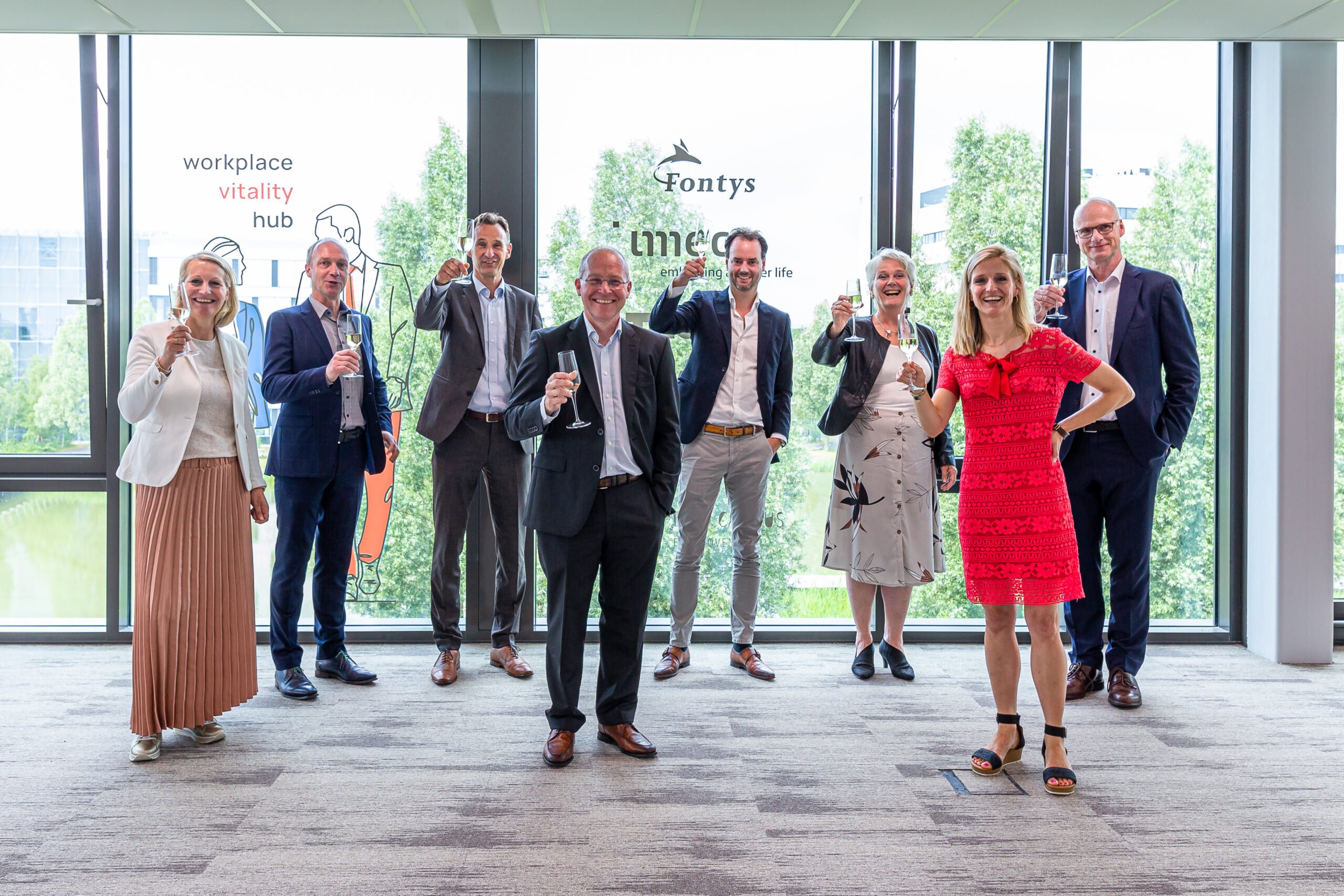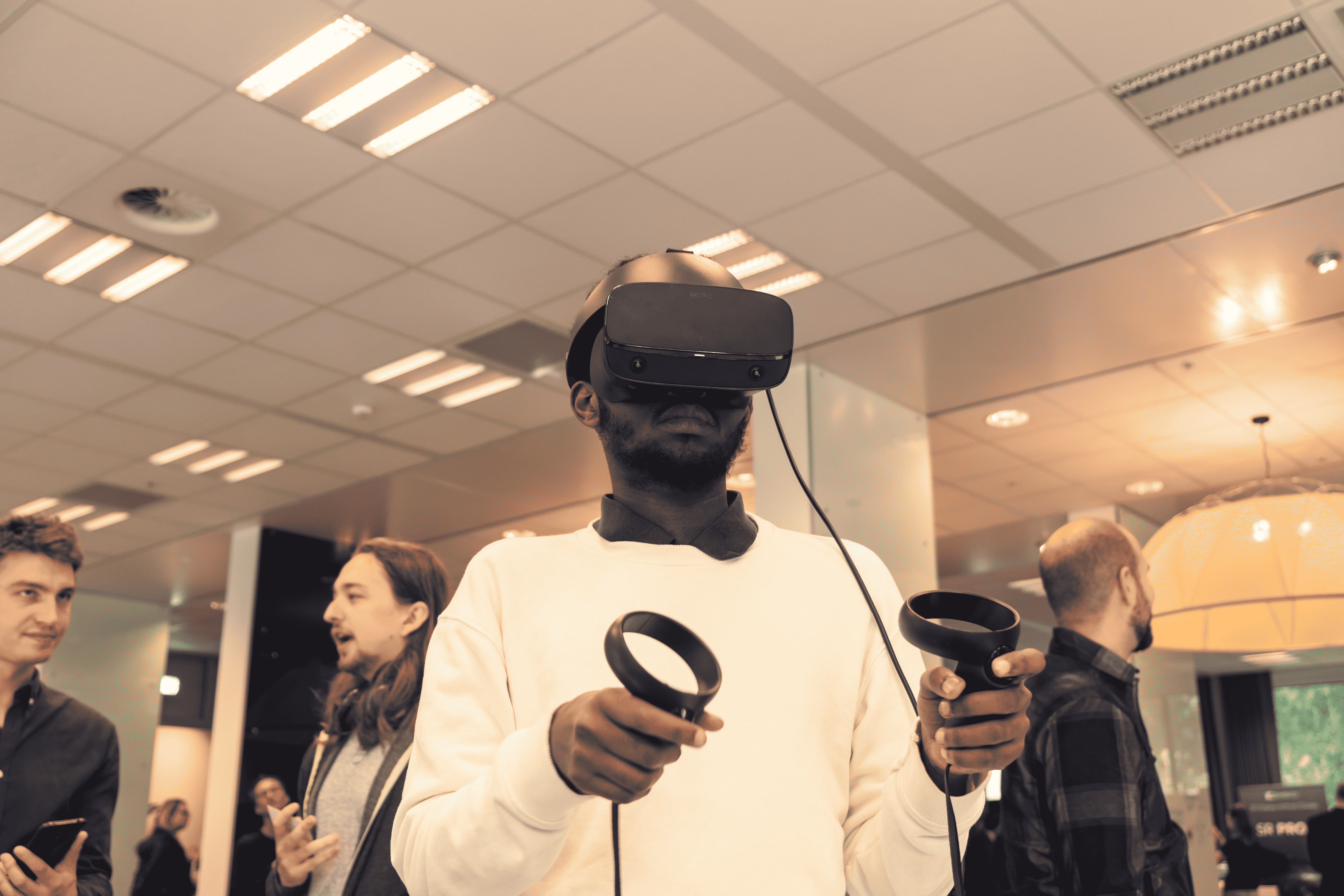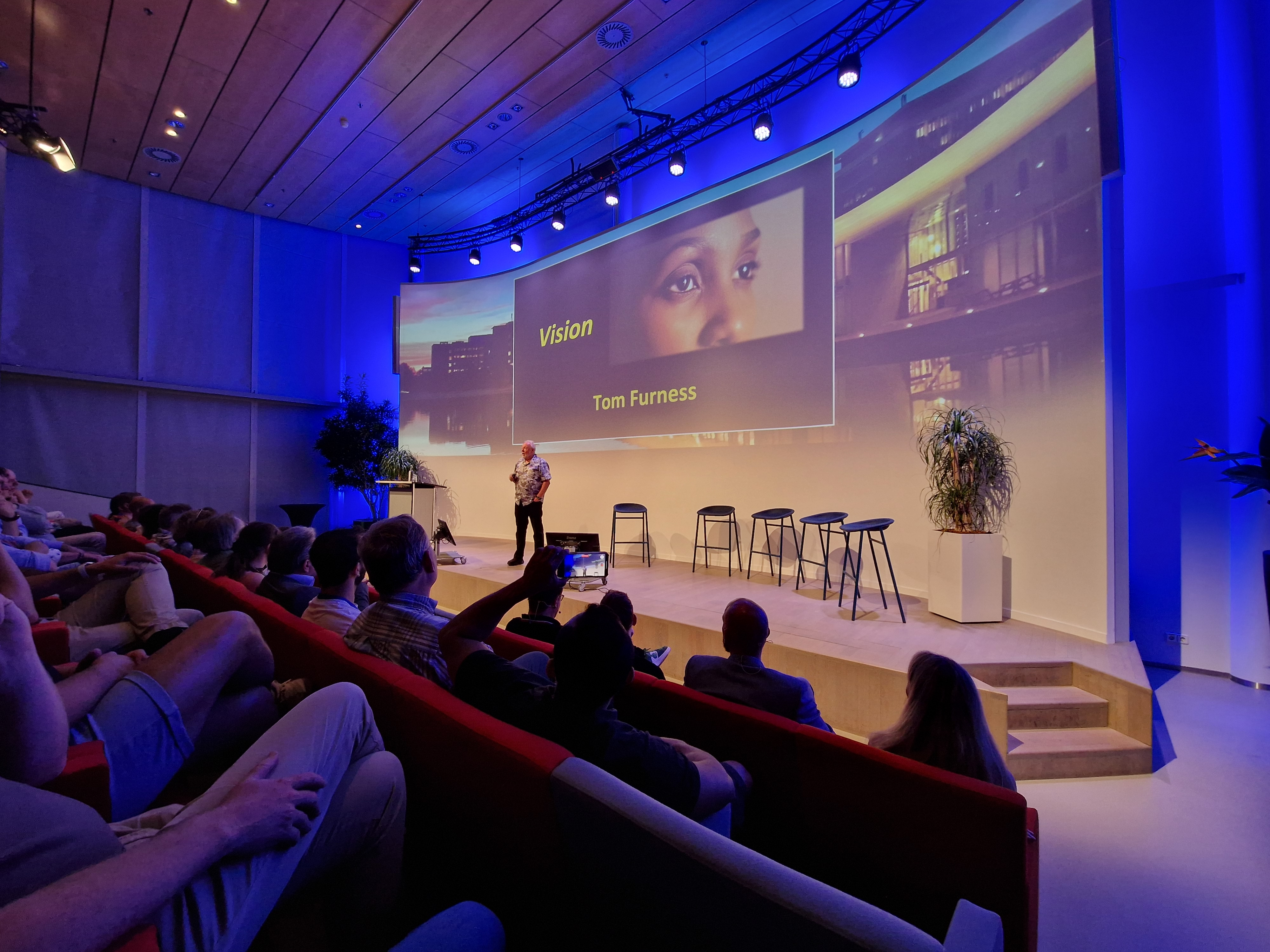
The period of “Work from home, unless…” is now behind us. But that most likely does not mean that we will be heading back to the office en masse. “We we have learned over the last while that a lot can be done online,” says Marieke van Beurden, program director of Human Vitality & Technology at the Eindhoven University of Technology (TU/e). “Anyway, I’m sure that we will no longer have workdays from 9 to 5 in one and the same place anymore.”
In the Workplace Vitality Hub on the High Tech Campus Eindhoven (HTCE), Van Beurden will be looking for innovations together with the other FITT partners from Fontys, imec and TNO to make the workplace as healthy as possible. “And to make it appealing to go back to the office.”
Since 2019, the FITT partners have been working together to get people to be more physically active at work, mentally healthier and more connected with their colleagues. As of September, the collaboration will also be given a physical location: the Workplace Vitality Hub on the High Tech Campus Eindhoven. A test room will be located on the second floor in one of the region’s smartest buildings. This week, the four founding fathers, the HTCE as campus developer, and Twice as an organization that gives companies access to the hub, signed the formal cooperation agreement.
Smart workplace
“Nothing is in place right now,” says Van Beurden. “But during the summer period, Spacewell and others will be installing software and sensors. This will allow us to monitor occupancy and to measure air quality, temperature and CO2 emissions.”
Rob van Gemert, director of sales & business development at Spacewell, is coordinating the software developer’s project. “We’re designing a smart workplace digital catalog of what is technically possible for the HTCE and the hub.”
Via an app, for example, someone can pass on that they want to come and work at their office. That app also takes into account who is present there each day. “So, if you want to discuss a few things with Marieke, for instance, the app will let you know if she is there that day. If she’s not there, that saves you a trip to the office,” Van Gemert explains. If there are too many people in a room, then the room will turn orange or red. The hub will also feature hardware such as a touch screen at the entrance to show the occupancy levels of each room.
Van Gemert: “There are lots of these types of software packages. They all have something to do with building management and climate control. Or the more efficient use of cleaning in frequently-used and less-used rooms. We can offer a total solution, independent of any brand or system, and link everything together. For example, we can collect information about how and when people use the offices. We make this information visible on a digital platform.”
Physical and mental state
With software and sensors, the hub will have a basis that other companies and institutions can make use of, Van Beurden adds. “It will be a space for fundamental research into, for example, the effect of light and sound on concentration and productivity levels. In addition, it will above all be a space where companies can test and validate their innovations.” Such as the vitality chair, a joint project involving imec and TNO. This chair uses integrated non-contact sensors to collect data on sitting postures, activity levels, heart rate and breathing during work hours.
“That should lead to information about the physical and mental state of the person sitting on the chair,” Van Beurden explains. “When a change is needed, or coaching is called for, a signal can be sent to the user of the chair.” That way, the person becomes aware of how the way they are working. And whether they need to change something. “This should, of course, be a comfortable and user-friendly system whereby the privacy of the user is safeguarded.”
Van Beurden: “What makes this hub so unique is that we are seeking interaction with people in the building. As such, it’s not just a smart building, we really focus on people who are working. By combining personal data with data about the building, we gain insight into what users need in order to do their work in a healthy and efficient way. Only after that do we take a look at how we can use the technology and the building to help with that.”
Walking meetings
According to Van Beurden, the Workplace Vitality Hub will not have any of the standard occupational health and safety—approved spaces with a screen, desk and chair. It will be a variety of settings: restaurant-like with sofas, or a standing workstation, or walking meetings. As an employee, you will work in the place that suits the work activities that you will do. “What I would like is for a workspace to adapt to my needs for light, sound and temperature, to name a few things.”
The hub also uses data from freely available sources, such as weather data. “If your people are given the suggestion to do a certain meeting while on a walk, then it would be convenient if it isn’t raining,” she notes.
Preventive
In addition to being a space for experimentation, companies can also join up to let their employees experience the innovations for themselves. “These are not just employees of the partners, but can be from any companies,” Van Beurden stresses.
For Van Beurden, it is ultimately about changing our whole system. “Our system is focused on healing. That also holds true when your job makes you sick. The occupational health and safety service only comes into action when someone reports in sick. While there are signs beforehand that can tell you that someone is becoming mentally overworked. Like the strokes on a keyboard, or the clicking of a mouse.”
So, Van Beurden says, there are start-ups offering innovations in the preventive corner. Who, for example, want to measure typing and mouse-clicking behavior over a longer period of time. “I do experience that myself. If I’m busy, you tend to pound harder on your keyboard than when you’re relaxed. If you can intervene at that point, it might not even ever get to the stage where people call in sick.”
Companies can sign up to participate in an experiment via this link. The official opening of the Workplace Vitality Hub is on 21 September.







